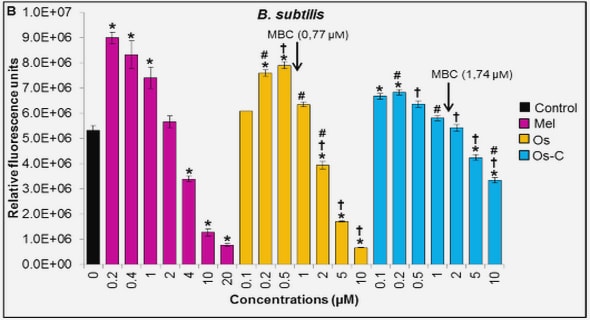(Downloads - 0)
For more info about our services contact : help@bestpfe.com
Table of contents
I General introduction
I.1 Global and societal context – An European agriculture vulnerable to environmental, energetic and economic challenges
I.1.1 The birth of an industrialised European agriculture
I.1.2 Environmental and social impacts of the European agriculture: source of global challenges
I.1.3 Trade-offs or synergies between functions in the industrialised European agriculture
I.1.4 Vulnerabilities of the industrialised European agriculture to the global challenges
I.1.5 Practices or composition changes to decrease vulnerabilities
I.2 Scientific challenge: assessing European farming systems resilience
I.2.1 Resilience concept in the scientific literature
I.2.2 Assessment indices of resilience
I.2.3 Resilience concept in the farming system literature
I.2.4 Quantitative resilience assessment in the farming system literature
I.3 Research question, general method and aims of the thesis
II General methodology
II.1 Why this type of model?
II.2 Modes of analysis used
II.3 Model description – Version of Chapter 2
II.3.1 General description
II.3.2 Description per compartment
II.3.3 Parameter sources and variable initialization
II.4 Scenarios simulated or optimised
II.5 Case studies
II.5.1 Three French farming systems
II.5.2 Grass-based beef cattle farming system in Alentejo, Portugal
Chapter 1 Robustness to import declines of three types of European farming systems assessed with a dynamic nitrogen flow model
1.1 Introduction
1.2 Material and Methods
1.2.1 General model description
1.2.2 Mathematical description by compartment
1.2.3 Simulated scenarios
1.2.4 Case studies
1.2.5 Parameters
1.3 Results
1.3.1 Extensive ruminant FS results
1.3.2 Intensive monogastric FS results
1.3.3 Field crops FS results
1.4 Discussion
1.4.1 Interaction of crop-grassland-livestock composition affecting robustness
1.4.2 Interaction between productivity and robustness
1.4.3 Decisive capacity of robustness for adaptability and transformability
1.4.4 Study and model limits
1.5 Conclusion
Chapter 2 European agriculture’s robustness to input import declines: a French case study
2.1 Introduction
2.2 Material and Methods
2.2.1 General model description
2.2.2 Scenario and simulations
2.2.3 Indicators of robustness to input import availability declines
2.2.4 Clustering indicators
2.2.5 Compositional indicators
2.2.6 Correlation matrix
2.2.7 Input data
2.3 Results
2.3.1 Robustness indicators
2.3.2 Relationship between robustness clusters and compositional indicators
2.3.3 Cluster description
2.4 Discussion
2.4.1 Crop-grassland-livestock compositions associated with robustness and input imports
2.4.2 Biological N fixation and robustness levels
2.4.3 Specialization of French FSs in the second half of the 20th century
2.4.4 Protein self-sufficiency under threat in 2050
2.4.5 Strategies for improving robustness: de-specializing agricultural regions?
2.4.6 Study limitations
2.4.7 Quality of estimates
2.5 Conclusion
Chapter 3 Crop-livestock compositional changes maximising food while minimising synthetic fertilizer use and feed import for three French farming system types
3.1 Introduction
3.2 Material and Methods
3.2.1 General model description
3.2.2 Optimization scenarios, driving variables and constraints
3.2.3 Case studies and input data
3.2.4 Optimisation procedure
3.3 Results
3.3.1 Pareto frontiers
3.3.2 Selected solutions
3.4 Discussion
3.4.1 Trade-off intensities explained by crop composition
3.4.2 MaxFoodMinImp solutions: increasing the monogastric number can optimise all the objectives
3.4.3 MaxFoodNoImp solutions: Without inputs, lower feed-food competition maximises food production
3.4.4 Legumes: marginal impact due to the current limited area
3.4.5 Resilience considerations regarding the implementation of compositional changes
3.4.6 Study limits and research perspectives
3.5 Conclusion
Chapter 4 Robust strategies for future meat production and climate change mitigation under imported input constraints in Alentejo, Portugal
4.1 Introduction
4.2 Materials and methods
4.2.1 Model overview
4.2.2 Description of model and adaptations
4.2.3 Simulations
4.3 Results and Discussion
4.3.1 Initial feed self-sufficiency
4.3.2 Temporal dynamics of meat production
4.3.3 GHG emissions
4.3.4 Total GHG balance versus meat production robustness
4.3.5 Implications of and limitations for the implementation of practice changes
4.3.6 Study and model limitations
4.3.7 Future research perspectives
4.4 Conclusion
III General discussion
III.1 Contributions
III.1.1 Major findings of the thesis
III.1.2 Collateral contributions
III.1.3 Methodological contributions
III.2 Methodological reflections
III.2.1 Reflections on the potential for conflicting conclusions
III.2.2 Reflections on the simulated disturbance scenario
III.2.3 Reflections on the food production objective
III.2.4 Reflections on model uncertainties
III.3 Research and applications perspectives
III.3.1 Research perspectives without conceptual development
III.3.2 Research perspectives with conceptual development
III.3.3 Applications perspectives
IV General conclusion




